How to choose the best walks and hikes around Australia
Of our hundreds of trails, a new book details 40 of the most scenic – ranging from Sydney’s Bondi to Manly walk to Tasmania’s Tarkine forest.
I think it was Sunday bushwalks as a kid with my family that first sowed the seed. The ritual always began with a barbecue and ended in Tim Tams, but somewhere in the middle a bushwalk would drop me in a wondrous world of fern-filled forests, waterfalls, goannas, lyrebirds and wildflowers, perhaps in the Dandenong Ranges, or the granite playground
of Hanging Rock.
My young mind would be blown by new discoveries and then at day’s end I’d flop into bed with satisfaction, legs having done something and lungs flushed with oxygen.
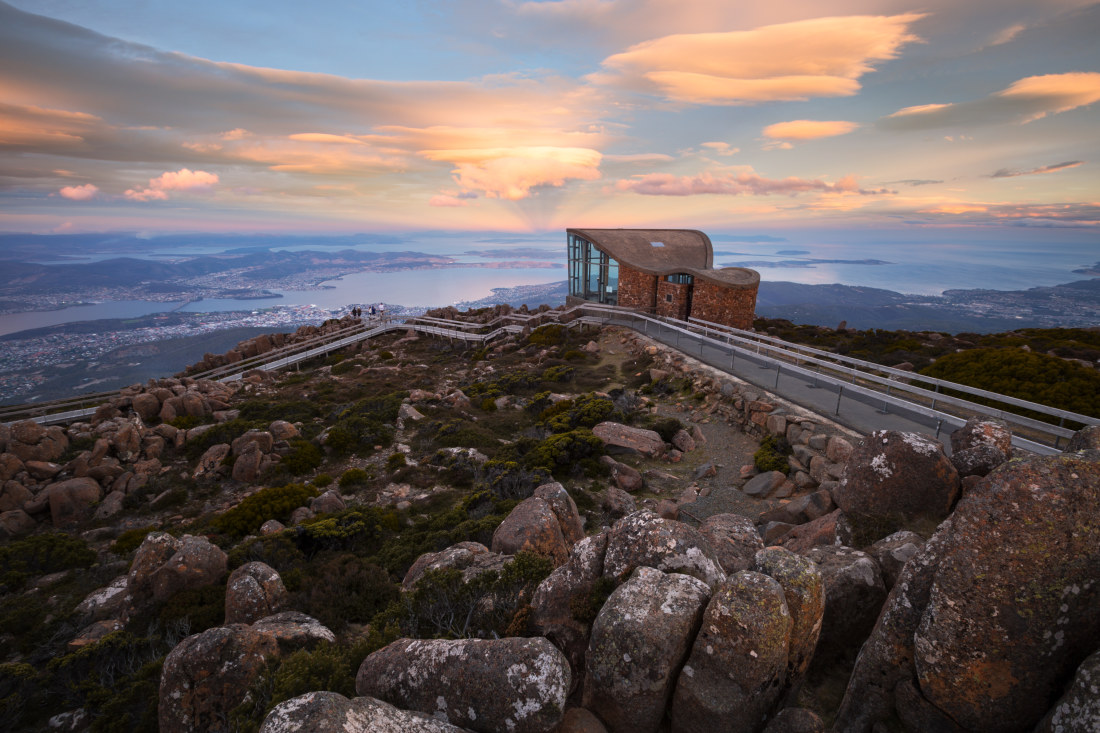
Tasmania’s Mount Wellington is 17 kilometres from Hobart. There are a variety of walks to enjoy in the area.
Since then, the bush has always been my happy place but it wasn’t until my thirties that I tried my first overnight hike.
A friend guided me on a jaunt through the rainforest near Cairns, while I carried a borrowed canvas backpack stuffed with far too many possessions. The experience was memorable and not long after, I headed out to traverse the rainforest, rivers and beaches of Hinchinbrook Island (on the Thorsborne Trail), discovering the satisfaction that comes with self-sufficiency and the bliss of simply walking.
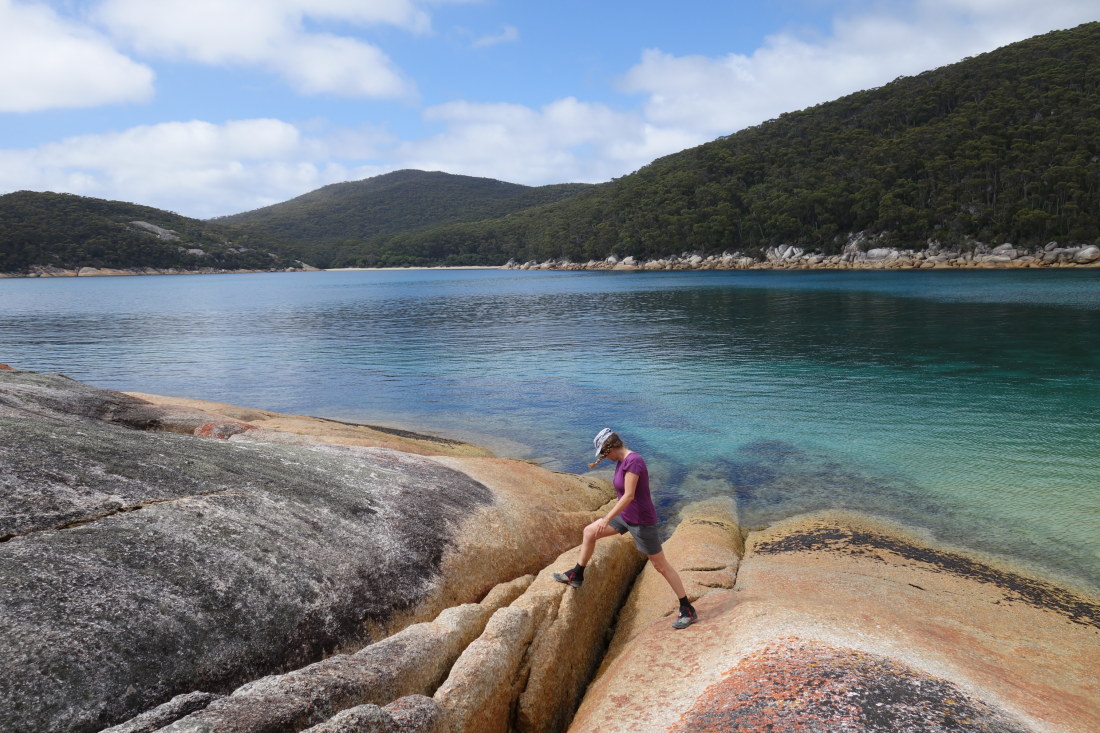
Refuge Bay is a highlight of the four-day Wilsons Promontory and southern circuit walk, 238km south of Melbourne.
A decade later, I catapulted into long-distance hiking – 3000 kilometres from one end of New Zealand to the other on the Te Araroa Trail.
I crossed countless unbridged rivers, traversed trackless terrain and got blown off my feet by gales. It wasn’t easy but I’ve also never been happier than I was with one bag of belongings on my back and my sole task being just to just walk.
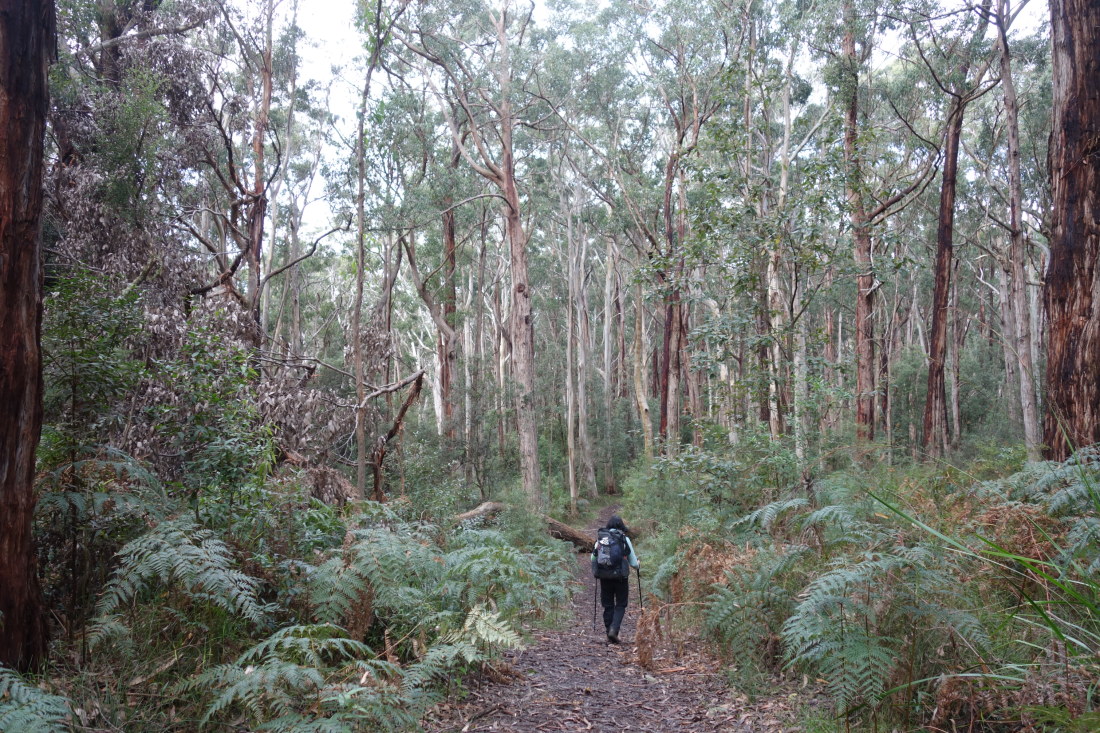
Victoria’s Great Ocean Walk takes in the Great Otway National Park. A must for any serious walker.
Those five months opened my eyes to the healing power of nature and the manifold benefits of rising to the challenge of an adventure. Since then, I’ve walked thousands more kilometres, through dusty canyons in Jordan, over glacier-carved mountains in Patagonia, and through villages in Nepal while snow-capped peaks towered over me.
Solo, I tackled the Bibbulmun Track – 1000km from Perth to Albany – and dozens of other Australian trails.
My love of hiking has never flagged; if anything it’s only become more firmly embedded in my psyche. Walking in nature has the ability to ground us, to reconnect us with something far bigger and more powerful than ourselves.
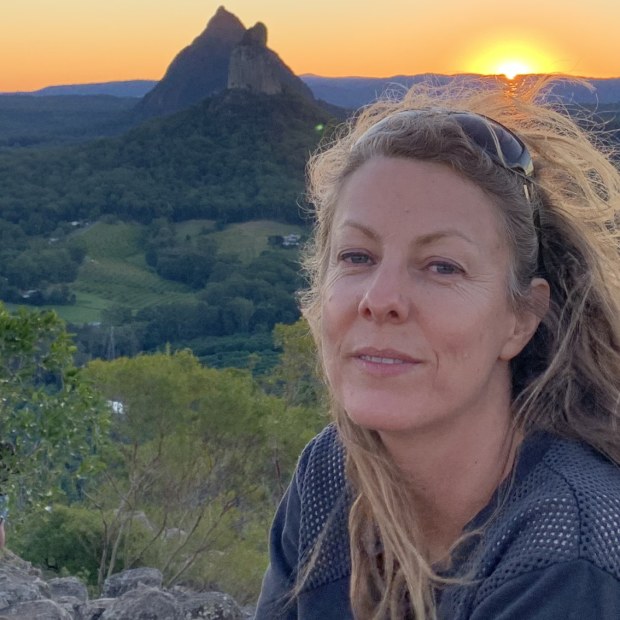
“The bush has always been my happy place but it wasn’t until my thirties that I tried my first overnight hike,” says writer Laura Waters.
You don’t have to travel far to feel it; even a few hours spent ambling in a misty forest, sun-drenched beach, or coastal clifftop is enough to revive the soul and inspire creativity.
My book outlines 40 of Australia’s most inspiring walks and hikes. In a country that spans 7.6 million square kilometres, it was no easy choice to select them and I make no claim they are the best – there is no way to classify this – however my aim is to showcase some of Australia’s incredible diversity, from rainforest to outback, mountains to coast.
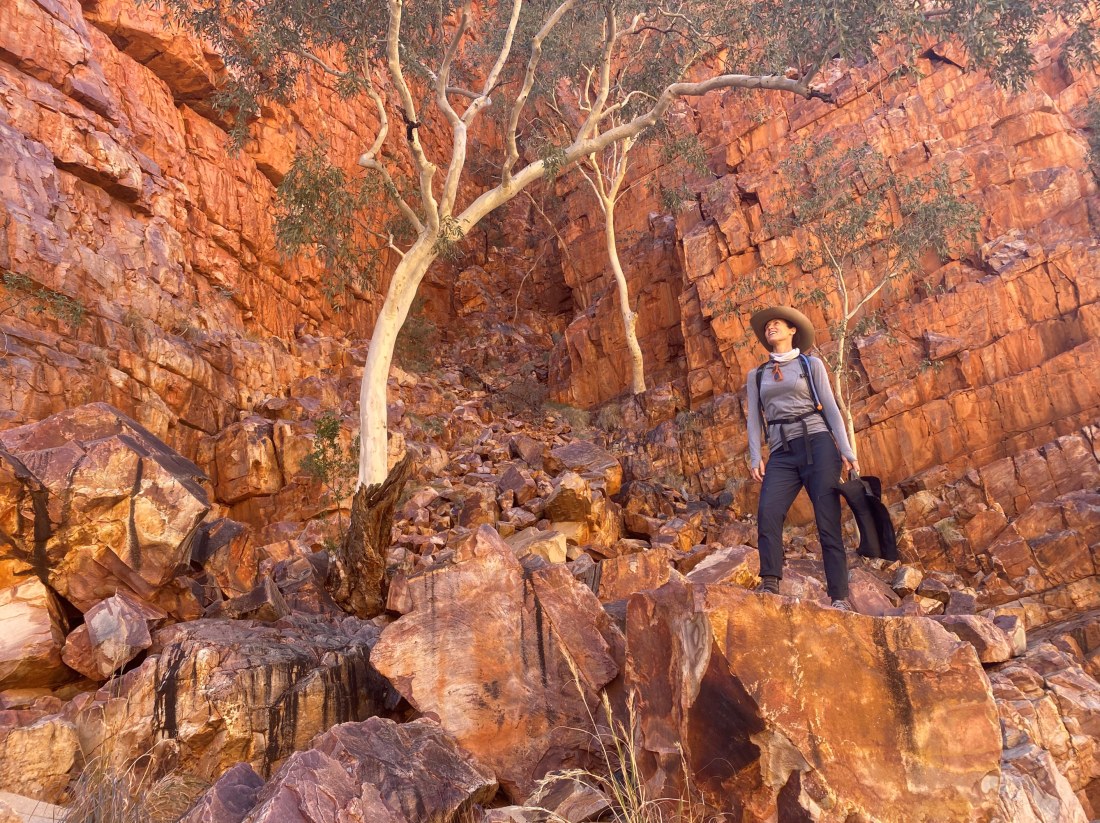
The gorgeous pink hues of the West MacDonnell Ranges on the Larapinta Trail in the Northern Territory. Cathy Finch
You’ll find some classics that are well known, for good reason, and hopefully some lesser-known trails you might not have considered. Some are easy rambles, while others are more challenging trails that anyone with a reasonable level of fitness and the desire to get out there can achieve.
More often than not, Australia is described as eight states and territories but in truth this wide brown land comprises scores of nations as identified by those who have lived here for at least 65,000 years.
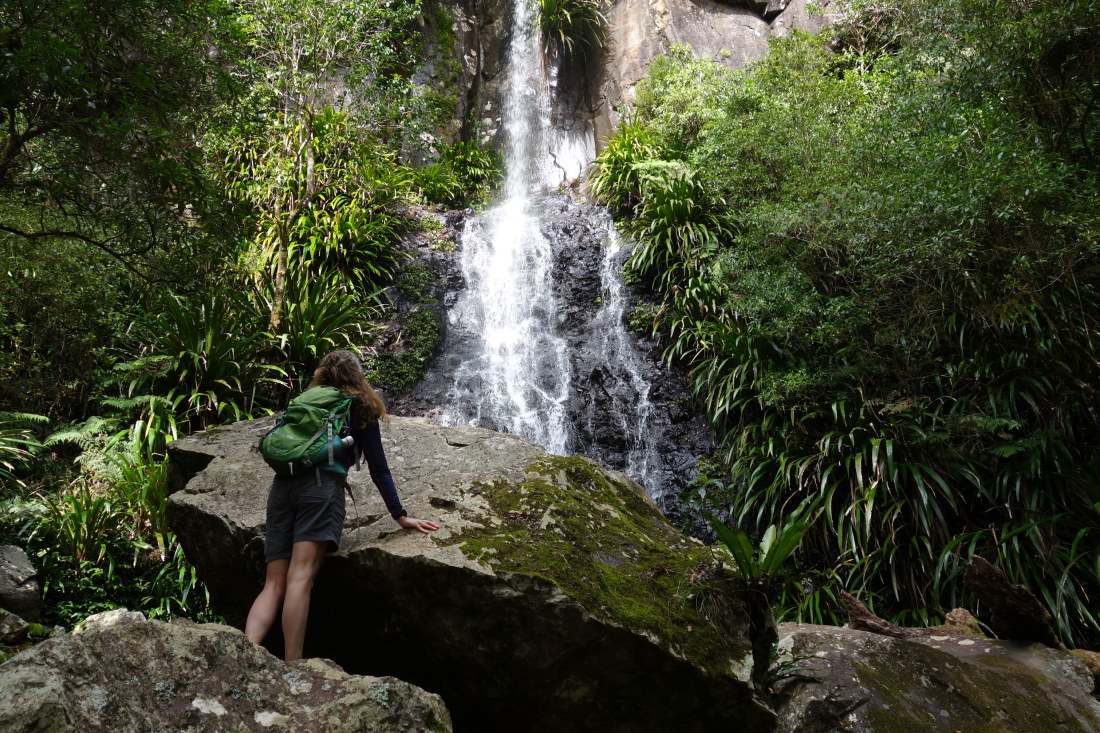
Queensland’s Toolona Falls walk features towering rainforest, Antarctic beech and lots of waterfalls.
Plenty of hikes in the book offer options for shorter variations and many of the longer walks can be tackled in sections, which means you can opt for a day hike, a weekend adventure or tick off an entire long-distance trail section-by-section over months.
I also encourage walkers to look at a map such as AIATSIS (the Australian Institute of Aboriginal and Torres Strait Islander Studies), or Gambay that shows First Nations Country, and you’ll see the complex divisions between nations, many of them encompassing clan groups with their own distinct culture, customs, law and language.
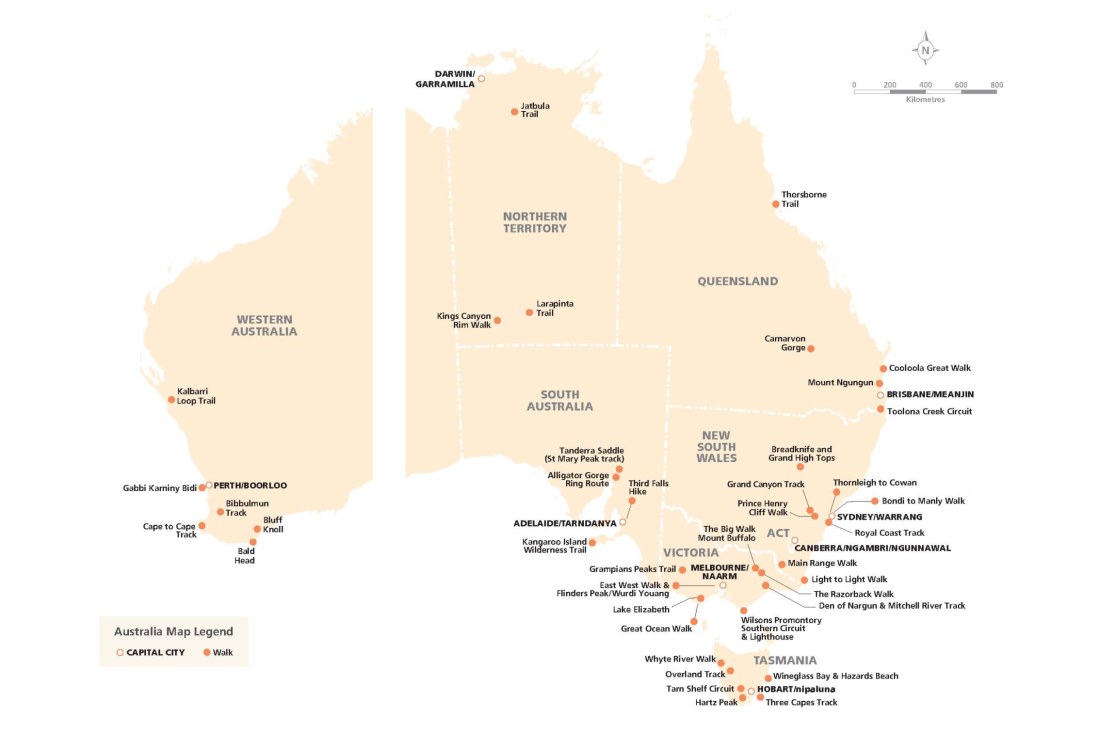
A map of the walking trails covered in Laura Waters’ new book.
My book recognises and respects that this is their land and identifies the country that each walk is on. Some walks visit important cultural sites and sacred areas. It’s also important to take opportunities to meet with traditional owners and take local tours.
The world needs more hikers. Get out there.
This is an edited extract from Laura Waters’ Ultimate Walks & Hikes: Australia book, published by Hardie Grant. RRP $45.
The walks pictured above
Photo one Tasmania’s Mount Wellington (Kunanyi), a 17km drive from Hobart, has many hiking options, including an easy 1.4km route across the summit plateau that showcases a wonderland of dolerite boulders, small pools and sturdy alpine plants. The expansive views over Hobart and the Derwent River are epic. Another popular option is the three-hour return hike to the Organ Pipes where a wall of hexagonal dolerite pillars rise up to 120 metres.
Photo two Wilsons Promontory Southern Circuit & Lighthouse (a walk on Boonwurrung Country), including Refuge Bay. This 53km four-day trail is especially good in spring and autumn. The walk takes in granite promontory sprawls, and headlands that cradle coves of powder-white sand and blue gin water.
Photo three The 100km (six-to-eight day) Great Ocean Walk is on Gadubanud and Girai wurrung Country. With its string of stunning beaches and striking cliff formations, the Great Ocean Road is one of Victoria’s most treasured attractions and this walk offers a backstage pass. On foot you get a far deeper understanding and appreciation of the coastline than you do with quick peeks from designated lookout points (as most car-based visitors experience it), plus you’ll do it without the crowds.
Photo four Larapinta Trail on Arrernte Country, covers a testing 226km over 12–18 days. There’s a real spiritual energy in Australia’s Red Centre that’s unmistakable on this journey weaving along the West MacDonnell Ranges/Tjoritja, between Mount Sonder/Rutjupma and Alice Springs/Mparntwe. It’s desert but that doesn’t mean its beauty is subtle.
Photo five Toolona Gorge in Lamington National Park feels like another time and place. The rainforest is supersized, bursting with waterfalls, and home to rare plants and animals, such as gnarled Antarctic beech trees, giant king ferns, Albert’s lyrebirds, and bright blue crayfish that hiss. A 17.4km return (six-hour) “hard” walk on Bundjalung Country.
Hiking hacks
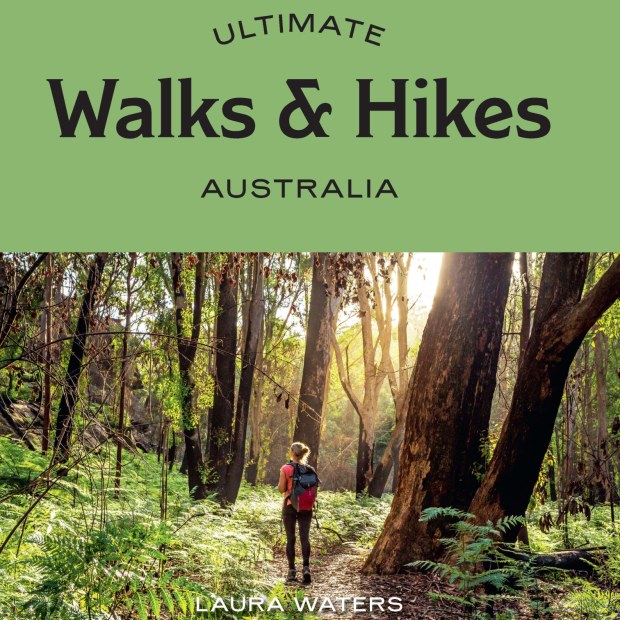
Detail from the cover of Waters’ book, out now in time for summer. Hardie Grant
Minimise packaging I used to use the stuff sacks that my sleeping bag, down jacket, and sleeping mat came in, until I realised that the resulting “cylinders” just created a lot of dead space in my pack. Removing stuff sacks can greatly reduce your pack volume. The same can be said for plastic containers. Roughly separate your gear by all means (food, clothes, for example), but use soft-sided bags and keep them loosely packed so they can find their own nooks and crannies inside your pack. When it comes to food, remove all unnecessary packaging before you head out on the trail to save weight and space, and to reduce the rubbish you need to carry home.
Keeping things dry You’ll want to ensure that the contents of your pack stay bone-dry, regardless of the conditions. A pack-cover will shed the bulk of a downfall but lining your pack with a dedicated pack liner or plastic bin bag will give you ultimate security.
Toiletries Mini sizes are best when it comes to toothpaste, soap or deodorant. A loofah mitt (of the kind used to buff your skin smooth) is a great way to scrub your body squeaky clean at the end of a day with minimal soap and water. Also, a thick disposable dishcloth (such as Chux) works just as well as a travel towel and is a fraction of the weight.
Feel-good stuff It’s amazing the morale-boosting power of small luxuries when you’re living on the trail. Everyone’s idea of a treat is different. Mine is a book to keep me entertained in camp, plus I also carry a tiny chunk of Lush massage bar. A little goes a long way, and just a quick rub of the feet, calves and thighs makes a huge difference to recovery. – LAURA WATERS
Subscribe to gift this article
Gift 5 articles to anyone you choose each month when you subscribe.
Subscribe nowAlready a subscriber?
Introducing your Newsfeed
Follow the topics, people and companies that matter to you.
Find out moreRead More
Latest In Travel
Fetching latest articles